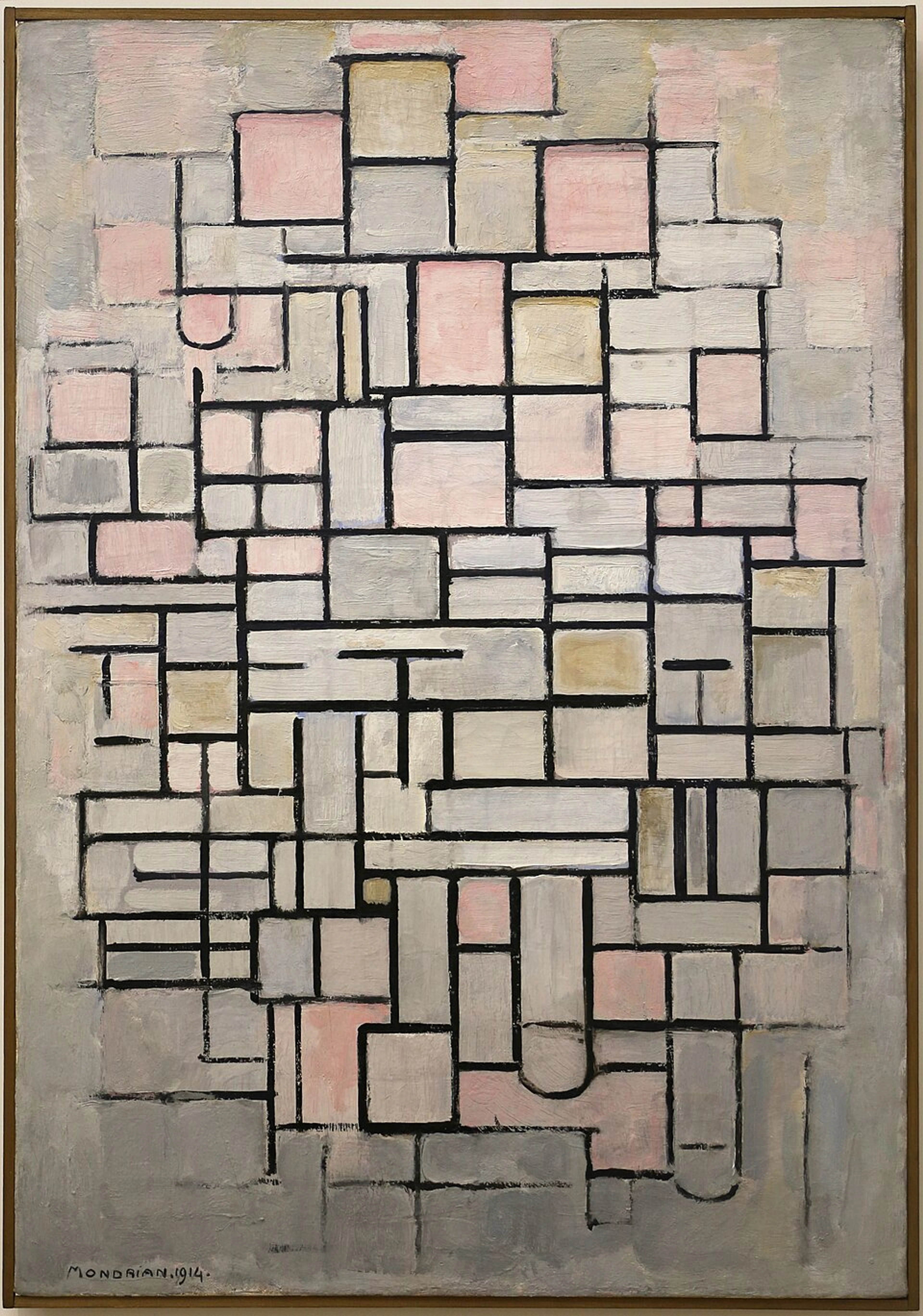
Abstracte Kunst Ontmysterd: Jouw Persoonlijke Gids naar Connectie & Betekenis
Ontdek de geheimen van abstracte kunst. Deze persoonlijke gids, door een abstract kunstenaar, helpt je non-representationele werken écht te 'zien', je eigen betekenis te vinden en emotioneel te verbinden. Begin vandaag nog jouw unieke kunstreis.
Abstracte Kunst Ontmysterd: Jouw Persoonlijke Gids naar Betekenis
Oké, laten we eerlijk zijn. Wanneer je voor het eerst abstracte kunst tegenkomt, vooral als je zoals ik bent – iemand die vroeger dacht dat kunst ergens op moest lijken – kan het een beetje... nou ja, buitenaards aanvoelen. Alsof je naar een muur vol levendige kronkels staart en denkt: "Is dit gewoon verf op een doek gegooid, of mis ik een of andere diepzinnige geheime handdruk?" Ik ben er geweest, geloof me. Jarenlang benaderde ik abstracte kunst met een mix van nieuwsgierigheid en milde ergernis, ervan overtuigd dat er een verborgen handleiding was die ik niet had ontvangen. Ik probeerde het zelfs academisch te begrijpen, theorieën te lezen en stromingen te ontleden, om me vervolgens nog meer verloren te voelen in een labyrint van 'ismen'.
Maar hier is de prachtige, enigszins ongemakkelijke waarheid waar ik uiteindelijk op stuitte: er is geen handleiding. Tenminste niet een die betekenis voorschrijft. In plaats daarvan nodigt abstracte kunst je uit om je eigen handleiding te schrijven, om je eigen betekenis te vinden. En dat, mijn vrienden, is waar het echte plezier, en soms de echte ongemakkelijkheid, begint – maar ook waar een hele nieuwe wereld van visuele conversatie zich opent, wachtend op jou, paden biedend naar zelfontdekking en een diepere emotionele connectie dan je zou verwachten. En als kunstenaar die abstract werk maakt, kan ik je vertellen, dit gaat niet alleen over het 'begrijpen' van kunst; het gaat over het bevorderen van een diepe connectie met elk stuk, een visueel gesprek dat gewoon op jou wacht. Dus pak een kop koffie (of een glas wijn, afhankelijk van je kunstkijkstemming), en laten we dit samen ontrafelen, niet met een lezing, maar met een praatje – een heel persoonlijk praatje.
Waarom Abstracte Kunst Zo... Abstract Voelt (En Dat Is Oké)
Ik herinner me levendig dat ik in een galerie stond, starend naar een uitgestrekt doek met gedempte grijzen en scherpe, onrustige roden. Mijn interne monoloog was een kakofonie van vragen: "Wat hoor ik te voelen? Is dit supposed to mean something? Had de kunstenaar gewoon een hele slechte dag met een kwast?" Het is een veelvoorkomend gevoel, toch? We zijn geconditioneerd om te zoeken naar verhalen, naar herkenbare vormen, naar een verhaal dat we gemakkelijk kunnen begrijpen. En wanneer het verhaal niet onmiddellijk duidelijk is, voelen we ons verloren, perhaps zelfs een beetje dom. Ik zeker, ik voelde me vaak alsof ik op een feestje was waar iedereen de geheime handdruk kende, behalve ik.
Een deel van deze afwijking van het letterlijke begon met de komst van de fotografie, die schilders bevrijdde van de noodzaak om de werkelijkheid slechts te reproduceren. Deze bevrijding ging niet alleen over fotografie; het viel samen met bredere culturele verschuivingen – nieuwe filosofische vraagstukken, de opkomst van de psychoanalyse die het onderbewuste verkende, en een wereld die worstelde met industrialisatie en oorlog. Kunstenaars zochten naar het uitdrukken van het ongeziene, het emotionele, het spirituele, of universele waarheden die de louter fysieke representatie overstegen. Maar de magie, en soms de frustratie, van abstracte kunst ligt in de afwijking van het figuratieve. Het is minder over het tonen van een specifieke boom en meer over het tonen van het gevoel van een bos, of de energie van groei. Het spreekt een andere taal – die van kleur, vorm, textuur en compositie. En like elke nieuwe taal, kost het even tijd om af te stemmen. Mijn persoonlijke reis omvatte veel staren. Just... staring. En dan, langzaam, een verschuiving. Ik begon het schilderij niet te zien als een raadsel dat opgelost moest worden, but als een visuele ervaring die gevoeld moest worden. Het goes less about what it is and more about hoe it makes you feel, of aan welke vergeten dromen of voorbijgaande emoties het je zachtjes herinnert. If je nadenkt over de bredere vraag naar het doel van kunst, vind je misschien interessante gedachten in What is the Meaning of Art.
De Kunst van het Zien (Niet Alleen Kijken)
Dit is waar mijn interne 'aha!' moment gebeurde. Vroeger keek ik naar abstracte kunst. Nu probeer ik het te zien. Wat is het verschil? Kijken is passief; zien is actief. Het gaat erom je ogen te laten dwalen, details op te merken zonder oordeel, en je intuïtie de leiding te laten nemen. Think of it like een visuele meditatie. Honestly, sometimes I still catch myself just 'looking,' hoping for an instant download of meaning – usually while my brain tries to figure out if I left the stove on. It's a practice, een spier die je opbouwt. En soms, it's just plain awkward.
Wanneer ik een abstract werk benader, begin ik vaak met de meest voor de hand liggende elementen:
- Kleur: Welke tinten domineren? Are they levendig en botsend, or gedempt en harmonieus? Hoe doen ze je voelen? Does this color palette evoke warmth, tension, or calm?
- Lijnen: Zijn ze scherp en agressief, or zacht en vloeiend? Do they pull je oog in een specifieke richting or create een sense of chaos?
- Textuur: Is de verf dik en impasto-achtig, or glad en plat? Does it invite je om het aan te raken, or does it feel like een geheim, verborgen laagje?
- Vorm en Figuur: Are there recognizable geometric shapes, or are they amorfe vlekken? Do these forms feel stabiel of dynamisch, ingesloten of uitbreidend?
- Licht en Waarde: Hoe creëert de wisselwerking van licht en schaduw diepte of vlakheid?
- Ruimte: Does the artwork feel uitgestrekt, beperkt of oneindig?
- Schaal: Hoe beïnvloedt de pure omvang van het werk jou? Een klein, intiem piece invites close contemplation, while een monumental canvas might envelop you, making you feel dwarfed or immersed.
- Compositie: Hoe zijn al these elements gerangschikt? Is there balans, asymmetrie, or een centraal focuspunt? Hoe stuurt de algehele rangschikking je blik?
![]()
Take, for instance, een close-up van een Richter abstract. Het is een krachtige illustratie van hoe abstracte kunst een bewijs kan zijn van de fysieke aard van creatie en het proces van de kunstenaar, almost like een geologisch monster. Je don't see een face of een landscape, but je can feel de movement, de scrape of de squeegee, de layers of paint. For me, it evokes the passage of time, like geologische lagen of het vervagen van herinneringen, whereby new experiences overlappen but don't erase the old. To understand more about his unique approach, duik in Ultimate Guide to Gerhard Richter.

Or consider Christopher Wool, whose work is een prime example of hoe abstracte kunst rauwe energie en een gevoel van opzettelijke spontaniteit kan overbrengen door schijnbaar willekeurige markeringen en druppels. I remember one Wool piece that initially struck me as pure chaos, but the more I looked, the more I saw een deliberate, almost dance-like quality in de drips, een rauwe, onverbloemde eerlijkheid. It's about de dans between intention and spontaneity, often leaving visual clues to the artist's hand. Explore his bold approach in Ultimate Guide to Christopher Wool.
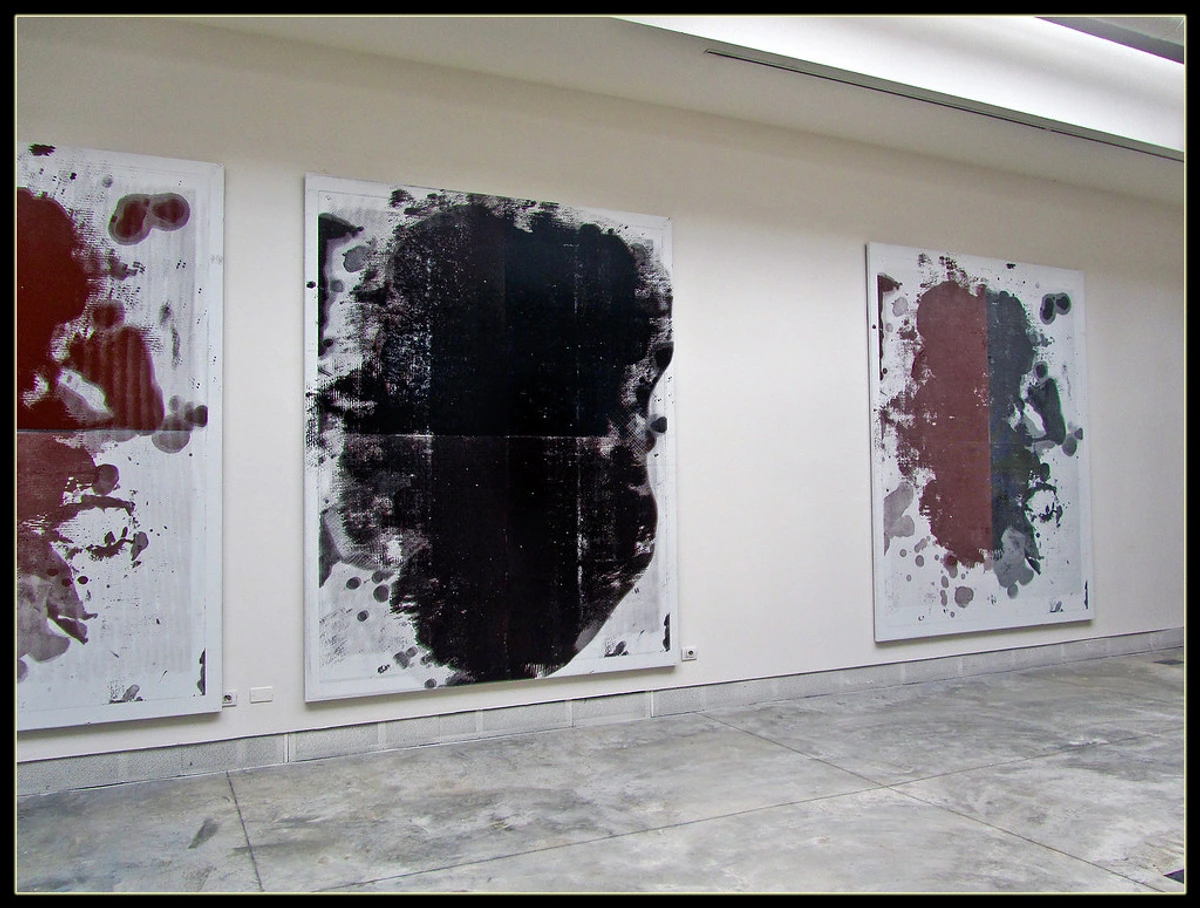
And then there’s Yayoi Kusama, whose immersive environments are een testament to hoe abstracte kunst diepgaande, zintuiglijke ervaringen kan creëren door herhaling en ruimte. While often featuring repetitieve patronen, her work transports you into een world where boundaries blur, and the sheer repetition of form and color evokes een feeling of infinity or obsession. It's a completely different way to experience abstraction, moving beyond een single canvas to een entire sensory landscape.
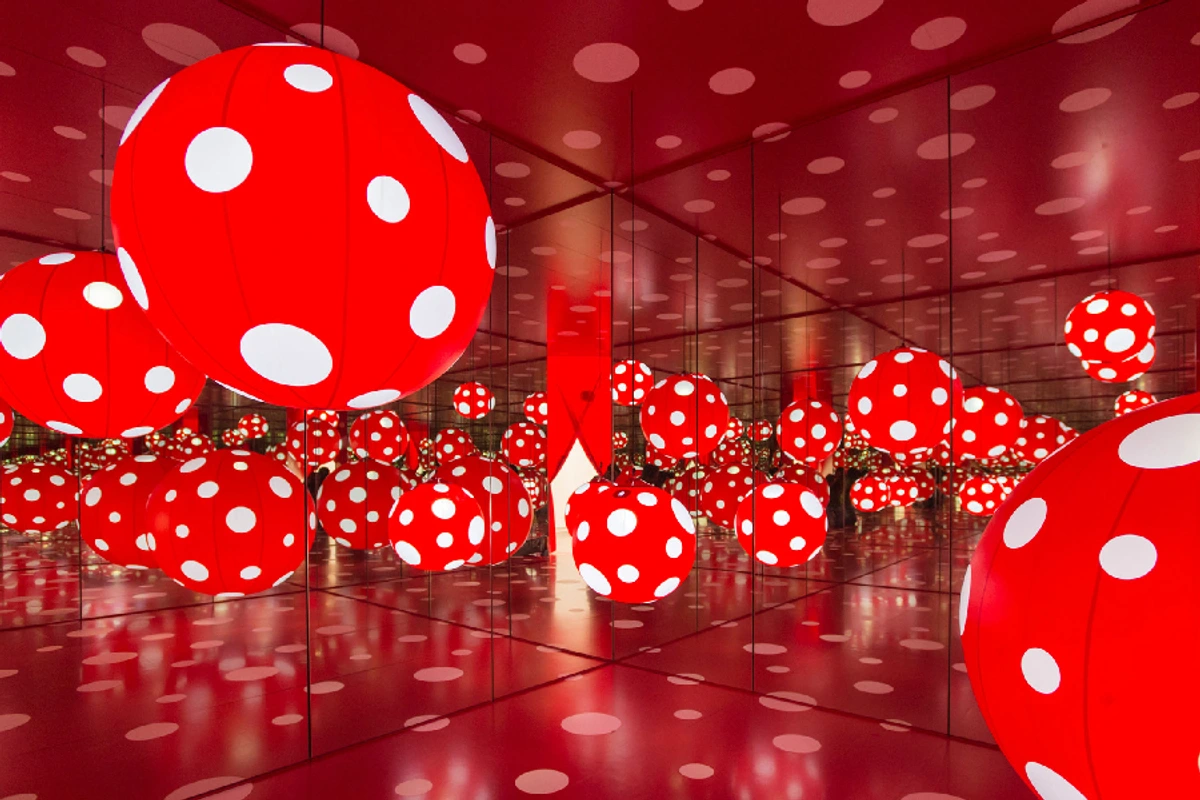
Voor mij, is het in deze intieme conversatie dat kunstenaars echt schitteren, using their visual language to evoke feelings and ideas that transcend literal depiction. De volgende keer dat je oog in oog staat met een abstract werk, try this: pick just one element – say, de kleur rood, or een single jagged line – and focus solely on it for een minute. What does it do? Hoe does it make you feel? It’s een tiny step, but sometimes, that’s all it takes to unlock een whole world. To dive deeper into hoe kleur can be een narrative in itself, explore How Artists Use Color or The Emotional Language of Color in Abstract Art. To understand the fundamental components of hoe kunstenaars build these visual experiences, check out What is Design in Art. And for een focus on texture, see The Role of Texture in Abstract Art: A Sensory Exploration.
Jouw Gevoelens, Jouw Betekenis: De Ultieme Tolk
Dit is de big one, de mic drop moment for abstract art: its meaning is often found within you. And frankly, what een opluchting! For een long time, I walked around feeling like I was failing some secret abstract art examen I didn't know de answers to. But here's de liberation: while the artist certainly pours their intentions, emotions, and een meticulous (or wildly spontaneous) process into their work, once it's out there, it's open to interpretation. And your interpretation is just as valid as anyone else's, even mine. This was een huge relief for my once-anxious brain. While an artist might have een specifieke boodschap or feeling they intend to convey, and understanding that context can certainly enrich your experience, it doesn't negate your personal response. Think of it as een conversation where both voices matter, een interplay where the artist's initial spark meets your unique emotional landscape.
Ik once saw een painting that looked, to my eyes, like een chaotic explosion. Mijn vriend, standing next to me, saw een calm, blossoming garden. We both laughed, realizing neither of us was "wrong." The painting simply resonated with us differently based on our own experiences and current moods. It wasn't een failure to understand; it was een success of personal connection.
Consider Kandinsky's work, often seen as pioneering in its move towards pure abstraction, aiming to evoke spiritual and emotional responses directly through color and form. Je don't need een narrative to feel the impact.
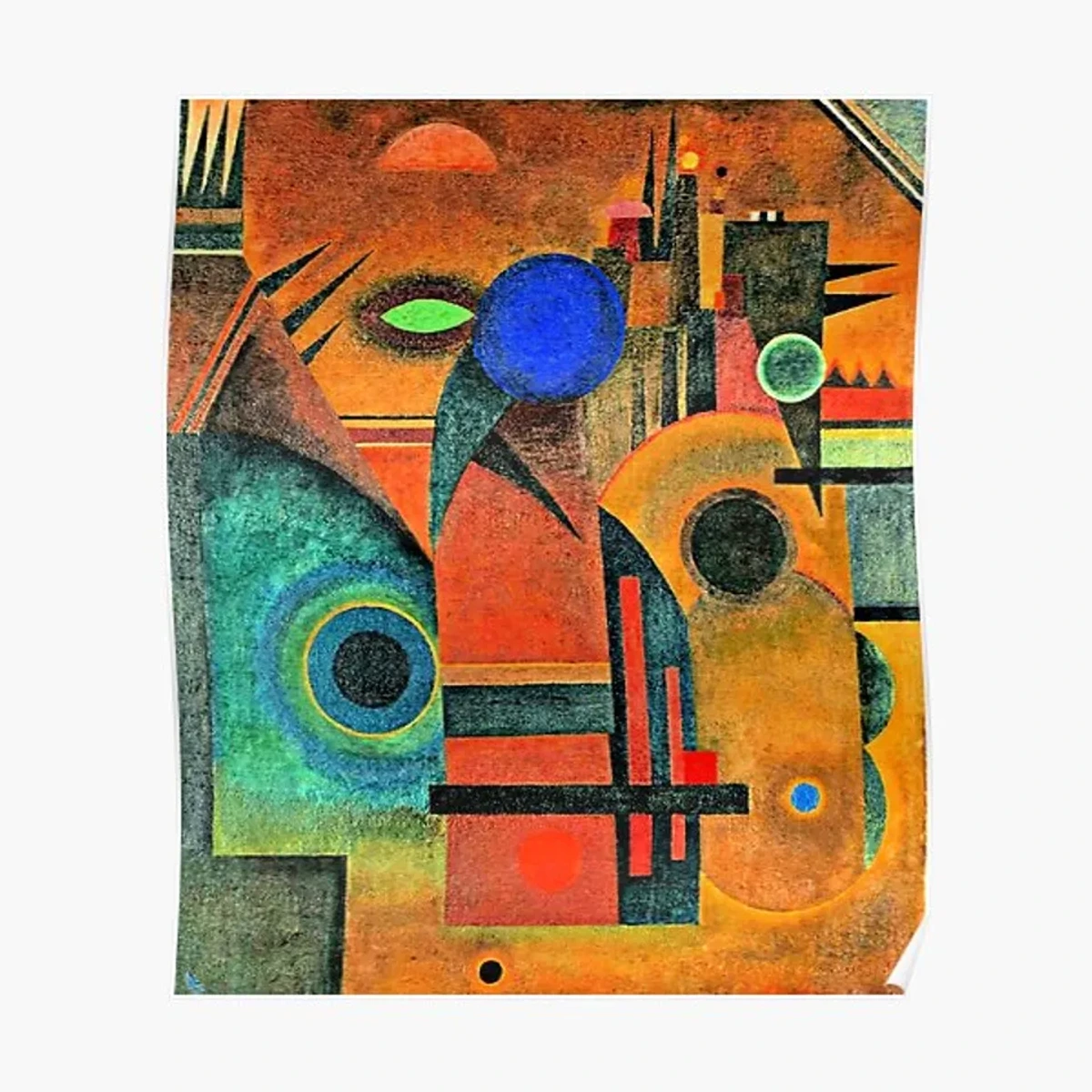
Dus, rather than asking "What does it mean?" try asking "What does this make me feel?" Does it feel energiek? Sereen? Mysterieus? Does it remind je of een distant memory, een piece of music, or een particular state of mind? This is your unique conversation with the artwork. If je looking for more guidance on unlocking these personal meanings, these articles might help: Decoding Abstract Art: A Guide to Finding Meaning in Non-Representational Works offers een broader overview, while Decoding Abstraction: A Beginner's Guide to Understanding Non-Representational Art provides een more foundational introduction for newcomers.
Enkele "Ankerpunten" (Als Je Ze Echt Nodig Hebt)
While I advocate for personal interpretation, I also get that sometimes, een little context can be like een warm blanket on een chilly day – or perhaps, for my analytical brain, een tiny roadmap in een vast, beautiful wilderness. Knowing een bit about art movements or the artist's general philosophy doesn't dictate your experience, but it can offer een gentle nudge, often enriching your personal connection by illuminating the artist's intent or the historical 'why' behind the work. After all, abstract art isn't just one thing; it's een vast field born from diverse motivations.
For example, if je know een piece is from the Abstract Expressionist movement, je might understand that the artist was less concerned with depicting reality and more with conveying raw emotion, energy, or their subconscious through bold gestures and spontaneous marks. This movement, emerging post-WWII, often reflected een desire for personal freedom and intense emotional expression, moving away from traditional narrative in part due to een disillusionment with established orders and een search for new forms of truth. To dive deeper into this explosive period, check out Ultimate Guide to Abstract Expressionism.

On the other hand, movements like De Stijl, championed by artists like Piet Mondrian, pursued een completely different path: pure geometric abstraction. Here, the artist's motivation was often filosofisch or spiritual, aiming for universal harmony and order through simplified forms and primary colors, een stark contrast to the emotional intensity of Abstract Expressionism. This rigid pursuit of essential forms was often influenced by een desire to rebuild society on rational, harmonious principles after the chaos of World War I. And then there's Lyrische Abstractie, exemplified by artists like Helen Frankenthaler, which, while also non-representational, often emphasizes expressive, flowing lines and soft, atmospheric color fields, focusing on subjective feelings and musical qualities rather than strict geometry or aggressive gestures. This highlights the incredible range within the abstract world.
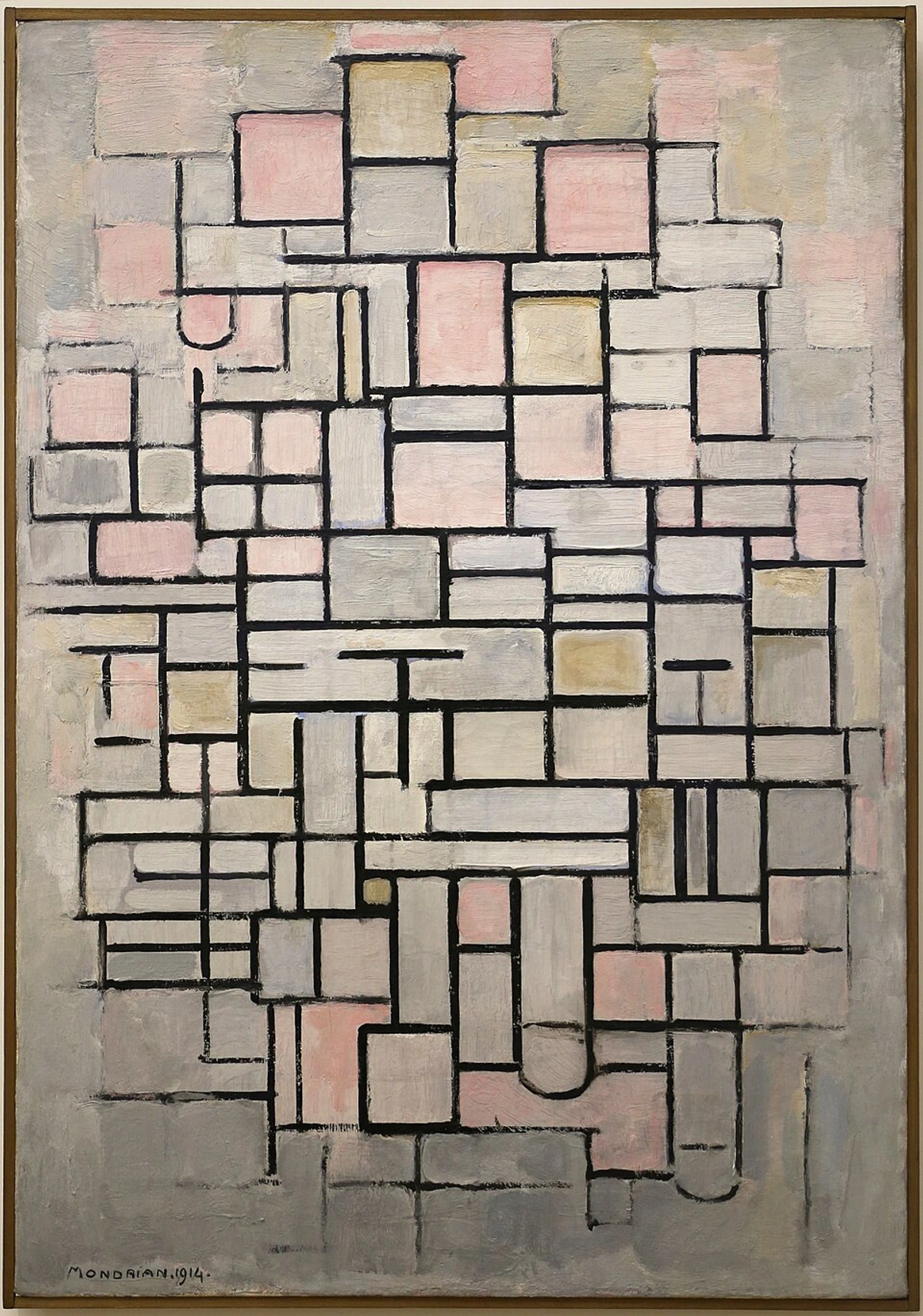
And for yet another contrast, consider Minimalisme. Artists like Frank Stella or Donald Judd stripped art down to its most essential forms – often geometric, monochroom, and industrial in their precisie. Here, the focus shifts to the object itself, its relationship with the space it occupies, and the viewer's immediate physical experience rather than emotional or narrative content. It’s een challenge to the very idea of 'expression,' aiming for pure, unadulterated form. Sometimes, my brain just needs that kind of clean, stark simplicity after grappling with een particularly exuberant Abstract Expressionist piece.
This background can be helpful, but it's important not to let it dictate your experience. It's een starting point, not de destination. If je curious about the historical context and hoe these various threads weave together, exploring The Evolution of Abstract Art: Key Movements and Their Collectible Value or even the broader History of Abstract Art could be een great next step.
Mijn Reis met Abstracte Kunst (En De Jouwe Kan Ook Beginnen)
Klaar om in mijn eigen rommelige, glorieuze reis met deze kunstvorm te duiken en te zien hoe het mijn filosofie weerspiegelt?
Als kunstenaar die abstract werk maakt, is mijn proces diep intuïtief, often starting with een feeling or een fleeting image in my mind that I then translate through color and form onto canvas. It's een conversation with de paint, een dans of spontaneity and deliberate mark-making. Ik often think about de layers of life, de hidden complexities, and hoe to express them without telling een literal story. Ik might aim to capture the quiet hum of een city at dawn, or de vibrant chaos of een dream, through my brushstrokes and layers of pigment. There are days where de paint just refuses to cooperate, leading to what I affectionately call 'gelukkige ongelukjes' (or, more often, 'gefrustreerde, met verf besmeurde omwegen'), but even those contribute to the story. One time, I was trying to achieve een very precise blend of blues, and de paint just... didn't. It ran, it mixed in an unexpected way, and for een moment, I was utterly frustrated. But then, I stepped back, saw de new form, and realized it captured the feeling of 'onvoorspelbaarheid' even better than my initial intention. It was een breakthrough not just for that painting, but for my understanding of embracing the unknown in art, much like hoe we learn to embrace the unknown in abstract viewing. This personal journey of deciphering abstract art as een viewer – letting go of expectations, embracing emotion, and finding my own story within the forms – has directly shaped hoe I approach my own canvases. It’s why I strive to create works that invite, rather than demand, interpretation; pieces that act as mirrors, reflecting something unique back to each viewer.
If je interested in the 'why' behind my own creations, je can delve into Why I Paint Abstract: My Personal Philosophy and Artistic Vision. For een peek into the messy, glorious reality of hoe these pieces come to life, check out The Art of Intuitive Painting: Embracing Spontaneity in Abstract Creation.
Mijn ultimate hope is that my art, much like the abstract pieces we've discussed, invites you to slow down, feel, and connect on een personal level. There's no right or wrong, only your unique experience. If this journey has sparked een new curiosity in je, I invite you to see hoe my personal philosophy translates onto canvas. Perhaps je'll find een piece that sparks its own conversation with je. Feel free to explore my art for sale, or if je ever in 's-Hertogenbosch, drop by my museum for een real-life encounter with the work – een chance to have your own unique conversation with the art, just like we've had today.
Veelgestelde Vragen Over Abstracte Kunst
Sometimes, even after all the personal pondering, een few practical questions linger. Here are some I often hear (and used to ask myself!):
Vraag | Mijn Persoonlijke Visie | Wat Te Onthouden |
|---|---|---|
| Is abstracte kunst zomaar willekeurig? | Absoluut niet! While spontaneity plays een role, there's often deep intention, een meticulous process, or een underlying structure. It's like watching een masterful chef; the final dish looks effortless, but the craft is immense. | Look for repetition, balans, ritme, or een dominante kleurverhaal. |
| Hoe weet ik of het "goede" abstracte kunst is? | This is de trickiest one, isn't it? For me, "good" abstract art evokes een feeling, sparks een thought, or simply captures my attention in een compelling way. It doesn't have to be universally loved, but it should resonate somewhere within you. | Vertrouw op je gevoel. If it resonates with you, it's good. If it provokes curiosity, even better. |
| Kan abstracte kunst een verhaal hebben? | Oh, absoluut! Just not een literal one. It can tell the story of een emotion, een sound, een memory, or even the artist's own physical process. Think of it as een poem, not een novel. | Het verhaal is often told through elements like penseelstreken, kleurverschuivingen, and the overall composition. |
| Vereist abstracte kunst vaardigheid? | Zeker! While it might not always involve traditional realism, abstract art demands een profound understanding of kleurentheorie, compositie, textuur, and often een mastery of materials. Mijn own process, for example, is built on years of practice, experimentation, and een deep knowledge of hoe different pigmenten interact. | De vaardigheid lies in orchestrating visual elements to evoke een specifiek feeling or idea, which is incredibly challenging. |
| Is abstracte kunst alleen voor 'kunstexperts' of 'rijke mensen'? | Absoluut niet! That's like saying music is only for composers or ballerinas. Abstract art is for iedereen willing to open their mind and feel. It's een personal journey, not een exclusive club. | Jouw connectie to the art is what matters, not your background or bank account. |
| Is abstracte kunst puur decoratief? | While it can be wonderfully decorative, its purpose often extends far beyond aesthetics. Many abstract artists seek to explore profound concepts, emotions, or social commentary without needing to represent them literally. | It often serves as een visual language for ideas that resist literal depiction. |
| Hoe begin ik abstracte kunst te waarderen als ik er helemaal nieuw in ben? | Begin klein. Don't feel pressured to 'get' it immediately. Visit een gallery, pick one piece that intrigues je (even if je don't know why), and just spend time with it. Let your mind wander. It's about opening een dialoog with yourself. | Begin with curiosity, not expectation. Jouw personal response is the key. |
| Hoe begin ik abstracte kunst voor mijn huis te kopen? | It can feel daunting, but it's simpler than je think. Start by exploring online galleries or visiting local art fairs. Look for pieces that genuinely resonate with je emotionally or aesthetically, regardless of the artist's fame or price tag. Don't worry about 'matching the couch' initially; focus on what sparks joy or curiosity. Many artists, like myself, offer een range of price points. | Focus on personal resonance, budget, and hoe it makes you feel in your space. |
| Is het erg als ik bepaalde abstracte kunst niet mooi vind? | Absoluut! Art is incredibly subjectief, and abstract art even more so. It’s like music; je don't have to love every genre or song. If een piece doesn't resonate, that's perfectly fine. | Jouw honest reaction is de most valid one. Don't force appreciation. |
De Abstracte Reis Omarmen
Dus, there je have it. Mijn somewhat rambling, deeply personal guide to demystifying abstract art. It's een journey I'm still on, and honestly, that's the beauty of it. It’s not about arriving at een definitive answer but about enjoying the process of discovery, of feeling, and of allowing een piece of art to speak to your soul in its own unique, non-literal way. There’s no test, no wrong answers, just een invitation to connect.
Dus go forth, stare at some squiggles, feel the colors, trace the lines with your eyes, and listen to what the art whispers to you. Je might just surprise yourself with the profound conversations je'll have with een canvas. What new meanings will you discover today? Write your own magnificent manual for understanding the abstract.




